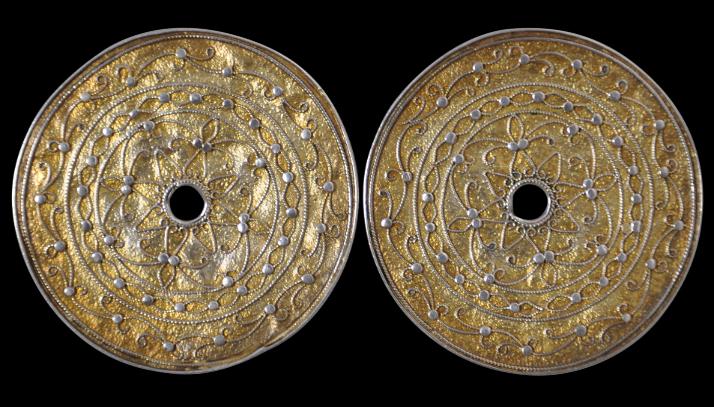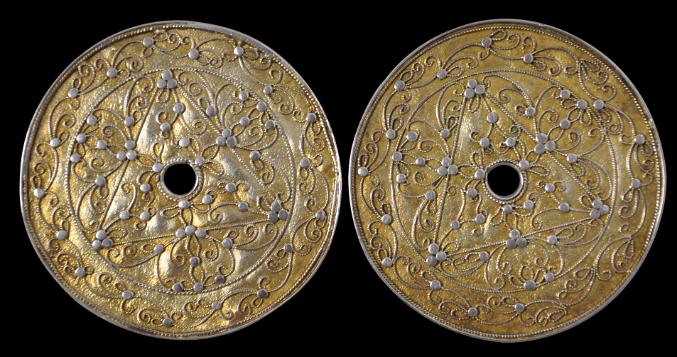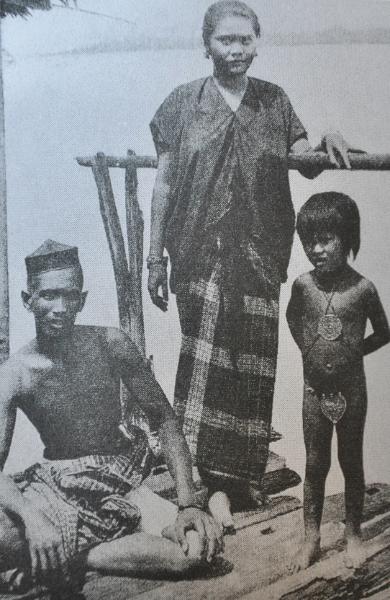
Bugis Kawari
Matching Pair of Silver Gilt & Filigree Islamic Talismanic Disks (Kawari)
Bugis People, South Sulawesi, Indonesia
19th century
diameter: 5.8cm, combined weight: 31g
This pair of talismanic silver disks are a matched pair (they were usually worn in pairs but tend to have become separated from one another over time). The pair are solid silver but are gilded (plated with gold.)Kawari were used by the Islamic, seafaring Bugis people of South Sulawesi (formerly known as the Celebes) for their talismanic properties. They were worn by the children of noble and well-to-do families suspended on chains, usually one on the back and one on the chest.
Both sides of each
kawari are embellished with designs in particularly fine filigree silver as well as applied flattened sphere, a decoration known as the telur ikan (fish egg) pattern. One side is taken up by a triangle motif contained within a circle, all decorated by scrolling floral patters. The other side has a central star or flower motif within a double circle, all decorated with scrolling filigree.
The pair are in very good condition with no obvious losses.
Similar examples are shown in Richter (2000, pp. 214-16).
References
Richter, A., The Jewellery of Southeast Asia, Thames & Hudson, 2000.
Provenance
UK private collection
Inventory no.: 2240
SOLD
here
to see other examples.



The Bugis child on the far right in this early photograph wears a kowari disk on her chest. A matching disk would be on her back. The pubic cover is a caping, also made of silver.

